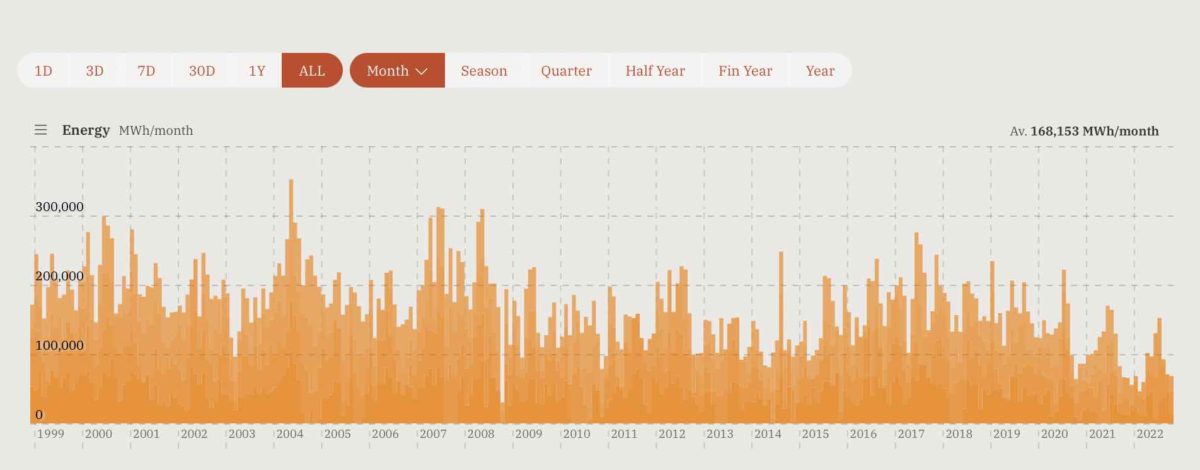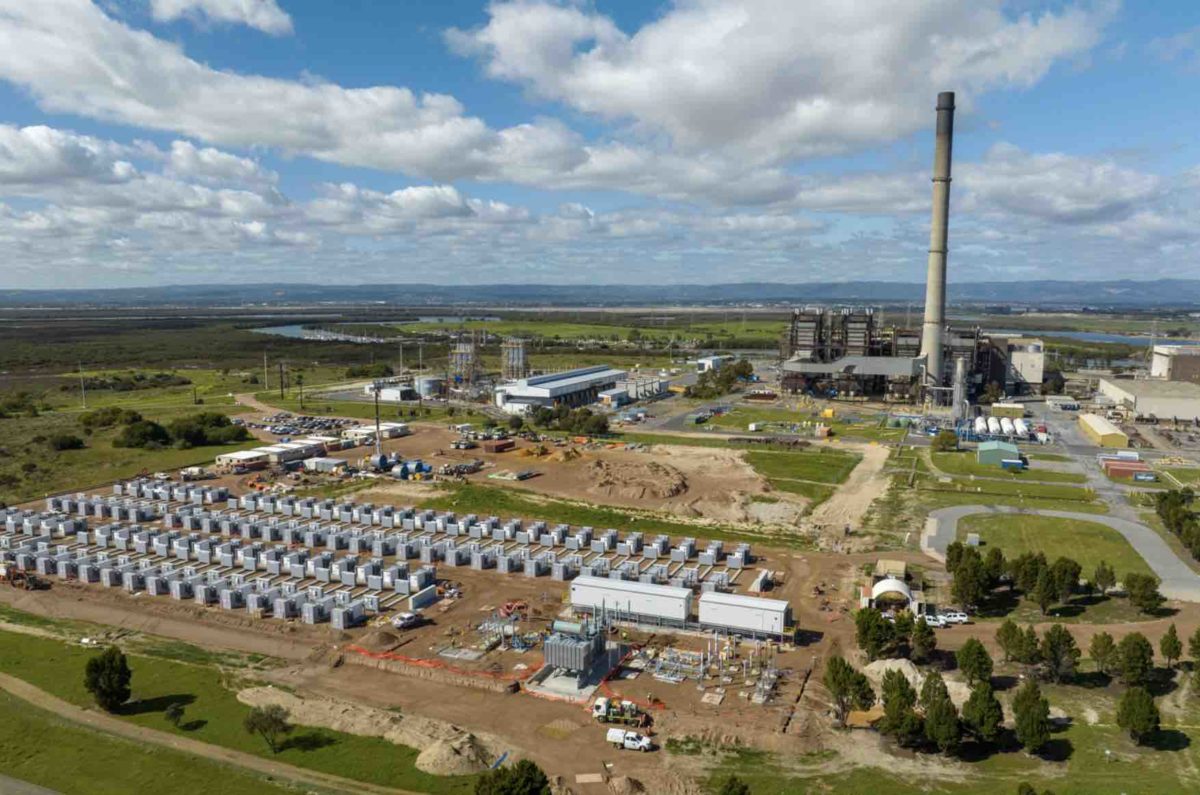AGL Energy has announced the early closure of the ageing Torrens Island B gas generator, the latest casualty of the accelerating switch to a renewables dominated grid in South Australia.
The 800MW Torrens B facility has already closed one of its four 200MW units, and will now close all of them by June 30, 2026, when the facility turns 50 years old. It had been scheduled to close around 2035.
The older 480MW Torrens A facility has already closed, and the latest closure move continues the work of transforming the facility into a low carbon industrial energy hub, including a 250MW, one hour battery that is now nearly complete.
The exit of Torrens B, first switched on in 1976, marks the further retreat of gas-fired generation as the share of renewables grows to more than two-thirds of demand, and with the rise of battery storage and the building of a major new transmission link to NSW.
The Australian Energy Market Operator and the local transmission network has installed four synchronous condensers that are spinning machines that do not burn fuel, but can provide many of the traditional grid services once delivered exclusively by fossil fuel generators.
Battery storage will also be able to deliver many of those same services.
The switching on of the syncons has dramatically reduced the amount of gas that is burned to make power for South Australia’s grid, and AGL says the closure date will coincide with the planned full connection of the new $2.3 billion Project EnergyConnect link to NSW.
It also marks the further shift away from so-called “baseload” power, with the closure of the last of the state’s coal fired generators in 2016, and the growing uptake of renewables and distributed energy.
Torrens B had for most of its time in operation operated at a capacity factor of around 30 per cent, average for such “combined cycle” gas power stations, but in the last 12 months this dropped well below 20 per cent for the three units still in operation.
That meant Torrens B was less used than the smaller 480MW Pelican Point gas generator in terms of output. Its status as the biggest gas generator in the state had ended a while ago.

“This decision follows careful consideration and extensive consultation with stakeholders, including the South Australian Government,” AGL said in a statement.
“This has been driven in part by the planned completion of the Project EnergyConnect interconnector between South Australia and New South Wales in mid-2026, which will further impact gas-fired generation in South Australia and as a result the economic viability of the power station.
AGL is going through its own internal transition, pressed by billionaire activist shareholder Mike Cannon-Brookes, who has helped stop a planned demerger of the company, accelerated its planned exit from coal (now 2035), and put forward four new independent directors to the board.
South Australia is the state at the pointy end of Australia’s green energy transition, already boasting a share of wind and solar over more than 66 per cent over the past year, and likely to reach net 100 per cent renewables soon after the new link to NSW is complete.
It has plans to go much further than that, with a series of large wind and solar projects jockeying for position in the anticipated green hydrogen market, with government plans for that sector expected to be rolled out soon.
AGL says it has invested $475 million in major energy projects on Torrens Island in the last four years, including the 210MW Barker Inlet Power Station, a fast start facility which opened in 2019, and the 250MW Torrens Island battery, which is expected to be operational mid 2023.
It notes that the battery – initially sized at one hour storage but with the potential to grow to four hours of storage – will provide crucial firming capability and system security to the grid. AGL has also recently announced a feasibility study into the development of a green hydrogen facility at Torrens Island.
The energy hub model is also being applied to AGL’s other fossil fuel generation centres, including at Liddell in NSW, which is due to close in April next year, and at Loy Yang in Victoria, expected to close by 2035.










